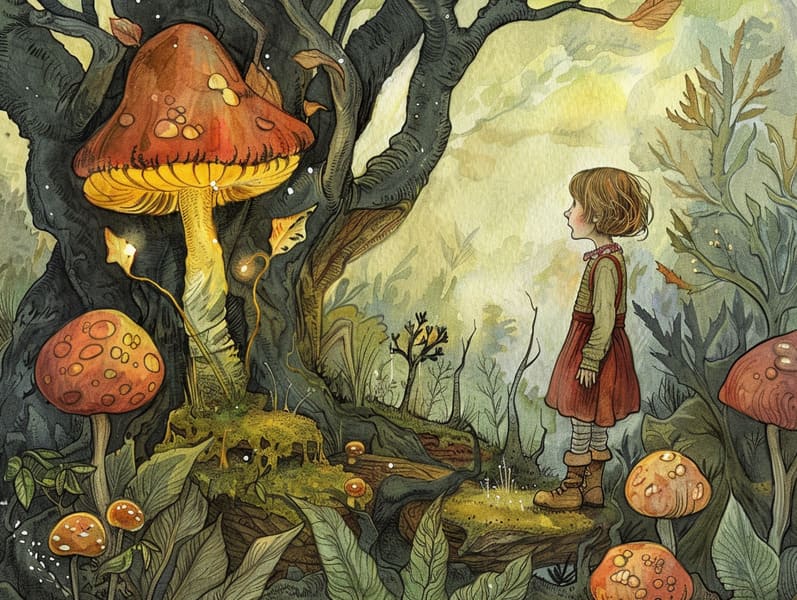The Formation of Fairy Tales with Its Consistent Captivation.
The Formation of Fairy Tales with Its Consistent Captivation.
Blog Article

Fairy tales for kids have deep roots. These stories have been spoken from one generation to the next far before they were ever inscribed. They came from a variety of traditions, including American traditions. They were initially shared among older generations, often carrying themes and messages reflective of the societal norms and beliefs of the time.
The Grimm brothers, Jacob and Wilhelm Grimm, were among the first to gather and publish many of these beloved fairy tales. Their compilation, "Grimm's Fables," included classics like "The True Bride," "The Story of Hansel and Gretel," and "Schneewittchen," which have since become mainstays in the world of famous fairy tales. Similarly, Andersen's delightful narratives, such as "The Mermaid," and "The Ugly Duckling," have captivated hearts worldwide, guaranteeing their place in the pantheon of treasured fairy tales.
Though they are centuries old, classic fairy tales remain as important as ever, especially as kids' bedtime tales. These whimsical stories are now available in different formats, including richly illustrated books, enchanting animations, and free fairy tales online.
Their lasting presence can be connected to several delightful features:
Key Lessons: Old fairy tales often teach important moral lessons. Narratives like "The Boy Who Cried Wolf" teach the benefit of integrity, while "The Tale of the Tortoise and the Hare" point out the traits of tenacity and unassuming nature. These stories offer kids clear distinctions between truth and falsehood, developing their moral compass in a mild yet deep way.
Sympathy and Perception: Fairy tales frequently portray heroines facing obstacles and hardships, inspiring kids to feel with their struggles and rally behind their triumphs. For instance, "Beauty and Her Beast" illustrates the benefit of looking deeper to understand the inner being of a being, fostering warmth and appreciation.
Cultural Perception: Many fairy tales are saturated in the cultural contexts from which they originated. Delving into these narratives can provide delightful insights into different social structures, strengthening a sense of world appreciation and discernment.
Inventiveness and Fantasy: The enchanted elements in ancient fairy tales—mythical creatures—enhance children’s innovative ideas. These stories bring readers to otherworldly realms, triggering imaginative dreams and a sense of marvel that persists a lifetime.
Ancient fairy tales are not only delightful but also informative. They provide entrancing tools in enhancing various mental and emotional abilities in the young. When ancient fairy tales are voiced, they promote communication skills by bringing new terms and meanings and intricate sentence structures. This practice also improves listening abilities and attentiveness, as the young focus on every detail, eager to see what happens next.
Furthermore, exploring the themes and characters of ancient fairy tales can sharpen analytical skills and analytical skills. Young readers are taught to identify patterns, guess what will happen, and figure out cause and effect. These debates also facilitate the young verbalize their thoughts and feelings, adding to their emotional intelligence.
In today’s digital age, the availability of internet fairy tales has made these stories more within reach than ever. Digital sites and applications offer huge assortments of bedtime fairy tales that can be experienced or listened on anytime, anywhere. Fairy tales spoken are particularly in demand, giving an interactive way for children to engage with these charming stories. Audio stories and read-out-loud stories carry characters and settings to life, often augmented by bewitching music and songs that boost the tale experience.
The lasting allure of classic fairy tales lies in their ability to adjust to contemporary times while holding onto their core values. Contemporary takes of these narratives often introduce more diverse figures and modern settings, making them understandable to today’s audience. However, the central morals of fortitude, humanity, and lawfulness remain unchanged, continuing to move listeners of all ages.
Fairy tales also offer a sense of peace and familiarity. They bestow a ordered narrative with a apparent beginning, middle, and end, often winding up with the conclusion of conflicts and the triumph of good over evil. This constancy can be solacing for kids, affording a sense of sturdiness in an ever-changing world.
Traditional fairy tales continue to spellbind and educate new generations, maintaining their attraction and importance in modern society. As bedtime stories for kids, they confer a perfect blend of fantasy and learning, facilitating moral values, empathy, and creativity. The abundance of digital fairy tales and the sought after status of fairy tales told out loud promise that these ancient tales remain reachable to new generations.
By conserving and making known these stories, we continue to exalt the rich tapestry of fables and cultural heritage. Whether you are check here browsing a vividly illustrated book, browsing a electronic collection, or listening on an audiobook, the radiance of old fairy tales is always within reach. These narratives demonstrate of the timeless influence of stories and its ability to draw us together across centuries and lands.
Even if you are perusing a artistically illustrated book, perusing a online library, or listening on an read-aloud story, the loveliness of popular fairy tales is always within reach.
These fairy tales highlight of the persistent power of stories and its ability to gather us across centuries and lands, creating a bond that delights and instructs alike.